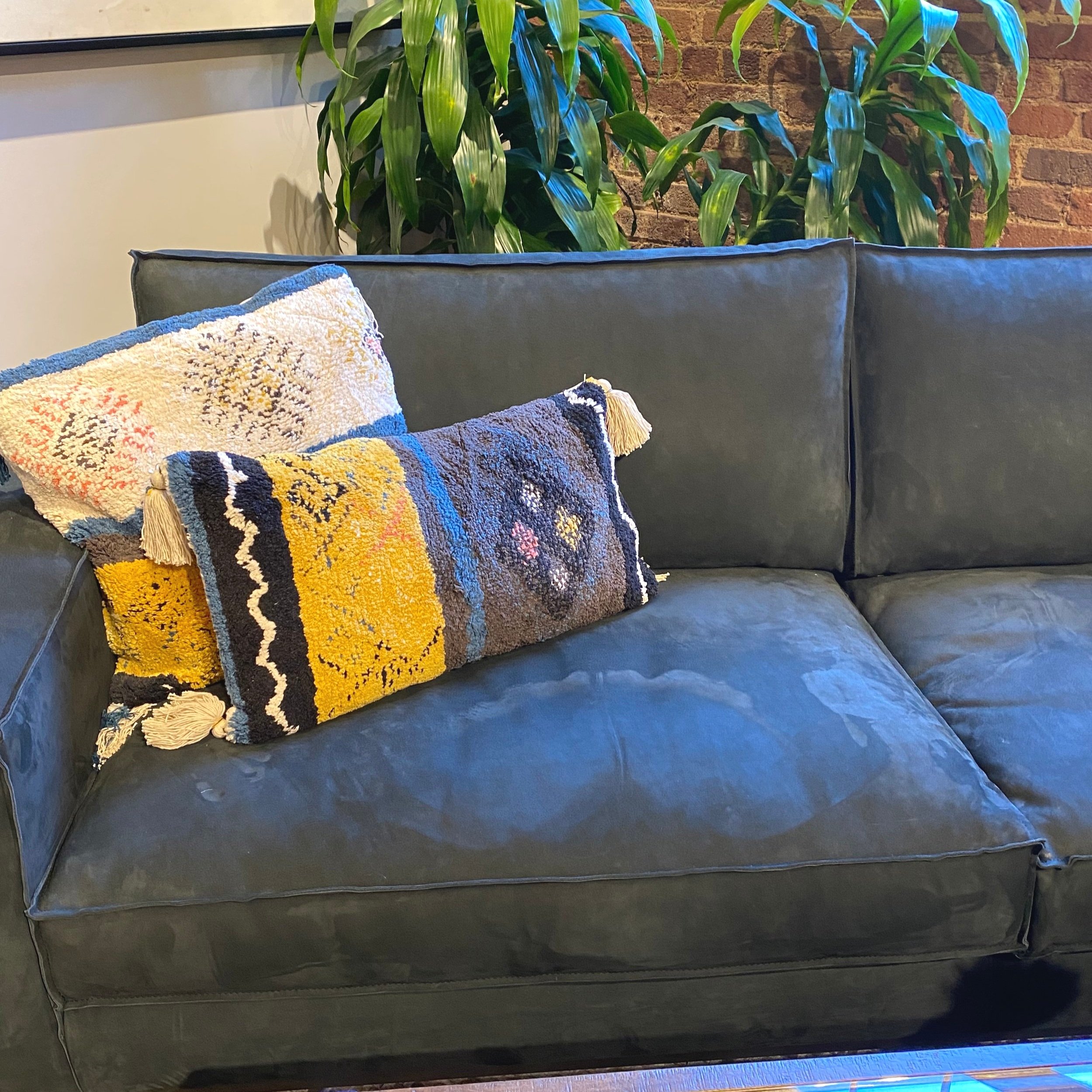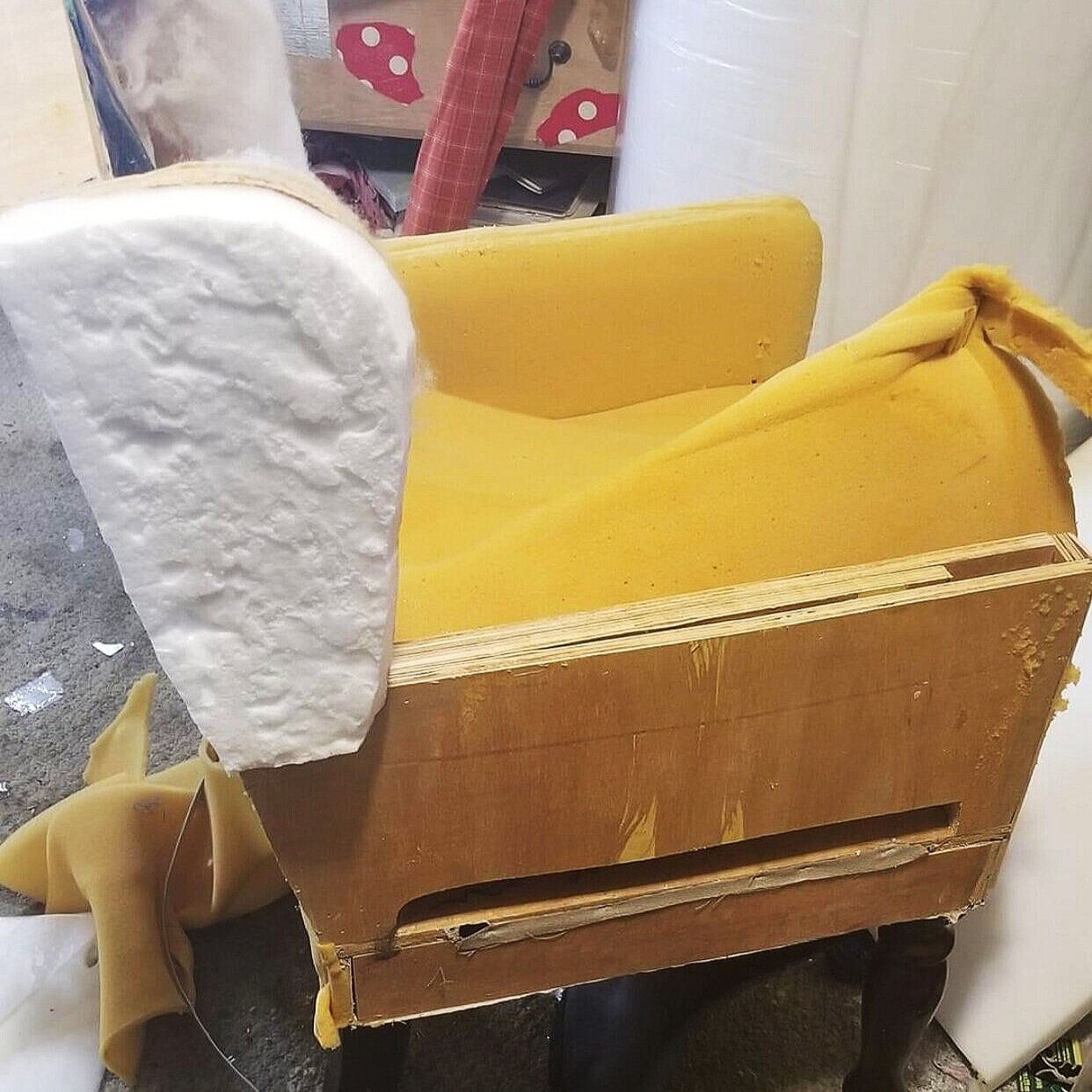What’s hiding underneath the fabric? And why it matters
UPHOLSTERY UNCOVERED
Has the hunt for the elusive sofa available in less than 6 to 9 months enticed your clients to go rogue? Have they sent you random snapshots of upholstery they “helpfully” found online or in a local retail store? And now they’re questioning you because they found something that looks EXACTLY like the one you recommended, but maybe thousands of dollars cheaper?!
Great…now what?
Hang in there with me. When you get to the bottom, I have an upholstery reference guide just for YOU!
The urge to replace a sofa after what feels like a lifetime of binge streaming feels universal, Collectively, we’ve created a butt-shaped divot from sitting in one spot. Your clients really WANT a new sofa NOW! But you just can’t get your hands on one!
Even after 2 years, this remains a real problem. I’m sure you‘ve seen the various posts, newsletters, and announcements explaining why. So I'm not going to add to that here. Unfortunately, it appears it’s not going away any time soon. ARGH…
I’m genuinely empathetic. I’m tired of looking at my sofa too.
So how do we help our clients here? How do we explain to them that the wait will be worth it when you might not even understand the difference yourself? As I write this I can hear my mom in my head - finger gently wagging - “Patience is a virtue, My Dear” But I’m not sure that clients would respond favorably to that admonition.
It’s not your fault that we weren’t taught the intricacies of upholstery construction in design school. Maybe there was a chapter about what is considered the gold standard, kiln-dried and 8-way hand-tied, but that’s about it. As a design professional responsible for our client’s best interests aesthetically, functionally, and financially it’s important to understand the competition.
I’m not going to sugarcoat this.
People are weird about their seating in a way they aren’t about a coffee table. Get it right and you’re a rock star! Get it wrong? Well…you know what happens next.
Can you confidently express to your clients why what you’re recommending is worth both the wait and the dollars over what they found online? Believe me when I tell you they’re finding similar items to that piece you carefully selected for them because value-engineered pieces are rampant online. RAMPANT! (voice raised, fist in the air)
What’s a good-intentioned designer to do? Read on Dear Design Professional. Read on.
Hello! It’s nice to meet you!
I’m Richelle, I’m a practicing interior designer and I also teach design professionals about the science of upholstery construction - how the construction materials work together in tandem to create the best seating experience for your clients’ needs. I previously owned an upholstery workroom that specialized in restoring vintage seating and believe me when I tell you, I’ve seen exactly how different construction methods and materials used over generations wear in real life. If you’re a design professional, I invite you to check out my upcoming UPHOLSTERY UNCOVERED sessions. Link HERE
Today I’m here today to share a few key points that are never discussed in design school. Get ready. I’m going to spill the proverbial tea.
That pretty fabric is covering a multitude of VALUE-ENGINEERING construction “sins”
You can’t compare apples to apples here when you’re looking at a cute blue swivel chair from a Barn-Barrel-Mart Big Box retailer to a well-crafted piece that is reupholster-able. This is where I inject my personal bias. For me personally, the litmus test for the BEST quality of construction is “does it make sense to reupholster it?”
Now before you tell me “Richelle! My clients are afraid to invest in trade upholstery because their kids are going to trash it!” I’m going to reply (with my mother’s wagging finger) “that’s exactly WHY they should have a well-made piece”. The insides of that bargain piece will fail your clients long before the little terrors ruin that hard-as-nails, family-friendly fabric. Trust me on this one.
I was reminded last week during a call with a designer who’s been established in business FOR YEARS and had no clue why she should even care what’s going on under the fabric. (Yes, I may have gasped and clutched my pearls)
Here’s the reason you should care. It’s called Value Engineering, and, in a nutshell, it means that in order to reach a predetermined price, manufacturers will remove various elements of “quality” construction that inherently make a piece durable.
Have you ever bought a piece of clothing that looked ah-mazing online and was such an incredible bargain? And then you washed it - and it came out of the dryer looking like a shadow of its former self? That’s because it was Value Engineered. Corners were cut in both materials and construction to produce that product at that price point that made you think it was a good deal.
Cabinet and plumbing design specialists know this trick too
Barn-Barrel-Mart Big Box manufacturers have done a fair amount of market research to know what the average consumer will PAY for a cute, blue swivel chair. Their next step is to Value Engineer the construction. Where exactly do you think they make those quality cuts? I’ll give you a minute…
Here’s a little behind the scenes for you.
The first level of construction manufacturing to go to attain a price point is the frame. Plywood and OSB (Oriented Strand Board) are cheaper both in materials and labor than solid lumber frames. A CNC machine can route out thousands and thousands of the same shape with a little bit of variation here or there. Tweak that length here, change that arm shape a little bit there. Staple those puppies together? Boom. Done. Next.
An important note here - not all ply frames are “bad.” When they are jigged together, they are often incredibly sturdy. But plywood frames are rarely “worth it” to reupholster if that’s your client’s future intention.
The second construction material engineered out is the foundational spring-up system. Typically, you won’t see 8-way hand-tied coil springs in a plywood frame because they require solid lumber to nail into, plywood will delaminate when nailed into the layers. Some manufacturers have added solid lumber to their ply frames, but that’s a story for another day.
The most cost-effective spring-up systems are sinuous and elastic webbing. Both are less labor-intensive and lighter in weight than 8-way coil springs. Does “free shipping sound familiar?” Nothing is free - a compromise was made.
Here’s what that looks like in real life.
Have you ever been in a restaurant booth and the seat just kind of sunk beneath you? That’s a tell-tell sign that the sinuous spring has given way. Granted, that typically happens when the sitter’s weight exceeds the capacity of the steel wire. And in case you’re wondering, that amount is 250lbs. (Ummm…Covid 20 anyone?)
But the place where minimum quality meets acceptable quality is in the seating cushions. Here’s the thing. Many manufacturers - especially those found rampant online - build PLANNED OBSOLESCENCE into their products so that you buy them more often. What does that mean? It means it’s DESIGNED to fail.
Ever notice that your phone works fine up until the warranty wears out? Then suddenly, it’s a piece of technology poop that you have to replace. It’s the very same thing with upholstery. There’s an anticipated life span built into that Barn-Barrel-Mart Big Box sofa and it’s shorter than you probably think so that you’ll come back – and buy another one.
Side note - just because a foam cushion is firm, that doesn’t mean it’s going to last longer. This is a popular topic in my UPHOLSTERY UNCOVERED class.
That sofa your client found for about $1500 has an anticipated life span of 3 years with “average” daily use. Average means that you sit there nicely like you would if you were meeting the in-laws for the first time. No jumping or squirming around. No sitting on the arms. No Superman lofting off the back. No pillow forts. In other words - no kids.
So how did I arrive at that $1500 number? Because it’s the sweet spot manufacturers want to meet because consumers have made it a ranking search term as “sofas under $1500.” And how did consumers arrive at that magic number when they really don’t have a clear understanding of what goes INSIDE an upholstered piece. See why your clients need you to be educated?
It’s all up to YOU dear Designer.
I know that lead times are long right now, but have you heard the saying “short-term sacrifices for long-term gains?” My Mom may have said that one too. Feel free to use it.
PEACE AND LOVE,Richelle
Thanks for reading all the way to the end! Here’s my Thank You Gift!
And if you’d like more information on upcoming UPHOLSTERY UNCOVERED sessions, feel free to hop on over and check it out!






